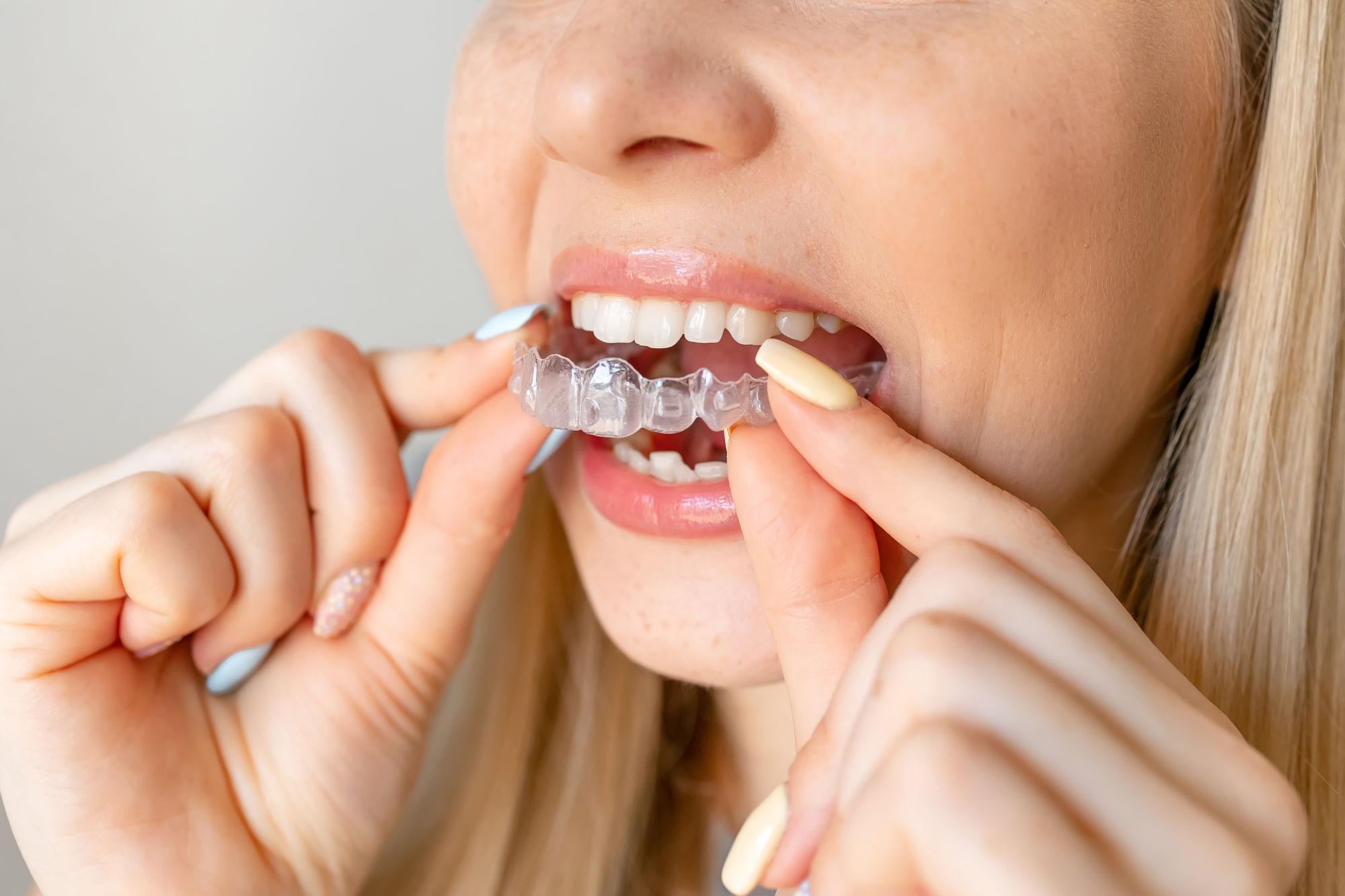Contents

Dental Aligners: The Invisible Revolution Comes at a Price... But Which One?
Imagine a world where you could achieve a perfect smile without anyone knowing you're wearing braces. This is the promise of clear aligners, the custom-made trays that straighten teeth with utmost discretion.
But does this orthodontic marvel come with a price tag to match its aesthetic prowess?
Discover in this guide everything you need to know about the costs of different aligner brands like Invisalign and at-home options, insurance reimbursement possibilities, as well as their advantages and limitations.
What is the Price of the Main Dental Aligners on the Market?
While the principle of clear aligners is generally the same from one brand to another, prices can vary significantly depending on the manufacturer and the complexity of the treatment. Here is an overview of the prices charged by the major players in the sector:
Invisalign, the Gold Standard and its Variations
As the global leader in invisible aligners, Invisalign offers a wide range of options depending on the severity of the issues to be corrected:
- Invisalign Comprehensive (complex cases): $4,500 to $8,000+
- Invisalign for Teens: $4,500 to $8,000+
- Invisalign Moderate (moderate cases): $3,500 to $6,000
- Invisalign Lite / Express (mild cases): $2,500 to $5,000
As the premium solution, the cost of Invisalign typically includes all aligners and follow-up appointments, but it remains one of the most expensive options on the market.
At-Home Aligner Brands That Shook Up Pricing
Determined to make invisible orthodontics more accessible, several direct-to-consumer startups offer aligners at a flat rate, often between $1,800 and $2,500. This model is suitable only for minor cosmetic corrections and relies on remote monitoring, which carries its own set of risks if not properly supervised by a dental professional from the start.
Are Dental Aligners Covered by Insurance?
Like any orthodontic treatment, the cost of clear aligners can quickly become a barrier. Many dental insurance plans with orthodontic coverage will cover Invisalign and other aligner treatments just as they would traditional braces. Coverage typically includes:
- A lifetime maximum for orthodontics (e.g., $1,500 - $2,500).
- A co-insurance percentage (usually 50%).
It's essential to check your plan for "adult orthodontic benefits" and any waiting periods before starting treatment. You can find more details in our complete guide to Invisalign reimbursement.
What Are the Pros and Cons of Invisible Aligners?
While they represent a true aesthetic revolution compared to traditional appliances, dental aligners are not a miracle solution. Here is a summary of their main strengths and weaknesses.
The Strengths of Clear Aligners
- Absolute Discretion: Nearly invisible when worn, aligners allow you to keep smiling in any situation.
- Optimal Comfort: Smooth and custom-fit, they generally don't cause pain or irritation after an initial adjustment period.
- Easier Hygiene: Being removable, they are easily taken out for brushing, eating, and drinking without risk of staining.
- Preserved Freedom: They can be temporarily removed for an important event.
The Limitations of Aligners
- High Cost: Despite becoming more common, aligners are generally more expensive than traditional braces.
- Conditional Effectiveness: While suitable for most mild to moderate issues, they may be insufficient for complex cases.
- Strict Compliance Required: They must be worn at least 22 hours a day to be effective, which demands great personal discipline.
How Do Clear Aligners Work?
Composed of two removable hard plastic trays (one for each arch), aligners are custom-made from digital scans of the patient's teeth. Through progressive and targeted pressure, they guide the teeth into their new position, step by step:
- Treatment Planning: After a 3D scan, the orthodontist defines a personalized plan and determines the number of aligners needed.
- Wearing the Aligners: Each set of aligners is worn for about 1-2 weeks, 22 hours a day, before moving on to the next set.
- Regular Monitoring: In-office or remote check-ups verify progress and allow for any necessary adjustments.
- Retention: Once the result is achieved, wearing a retainer, often at night, is necessary to prevent relapse.
In Summary
Despite a still-high cost, dental aligners are increasingly appealing to patients won over by their discretion and daily comfort. While not suitable for all malocclusions, they offer an invisible and effective alternative to traditional braces for the majority of mild to moderate cases. With the arrival of more accessible brands and growing coverage from insurance plans, invisible orthodontics has a bright future!
FAQ About Dental Aligners
How much does an Invisalign treatment cost?
The price of an Invisalign treatment varies depending on the complexity of the problem to be corrected. On average, you can expect to pay between $3,000 and $8,000 for a complete Invisalign treatment.
Are at-home aligners covered by insurance?
Coverage for at-home brands can be more limited than for in-office treatments like Invisalign. Some insurance plans may offer partial reimbursement, but it is crucial to check the specifics of your policy.
Who can benefit from Invisalign Teen?
Invisalign Teen is a formula specially designed for adolescents, which takes into account the growth and development of their dentition. It is suitable for most teens with alignment issues and includes features like compliance indicators.
